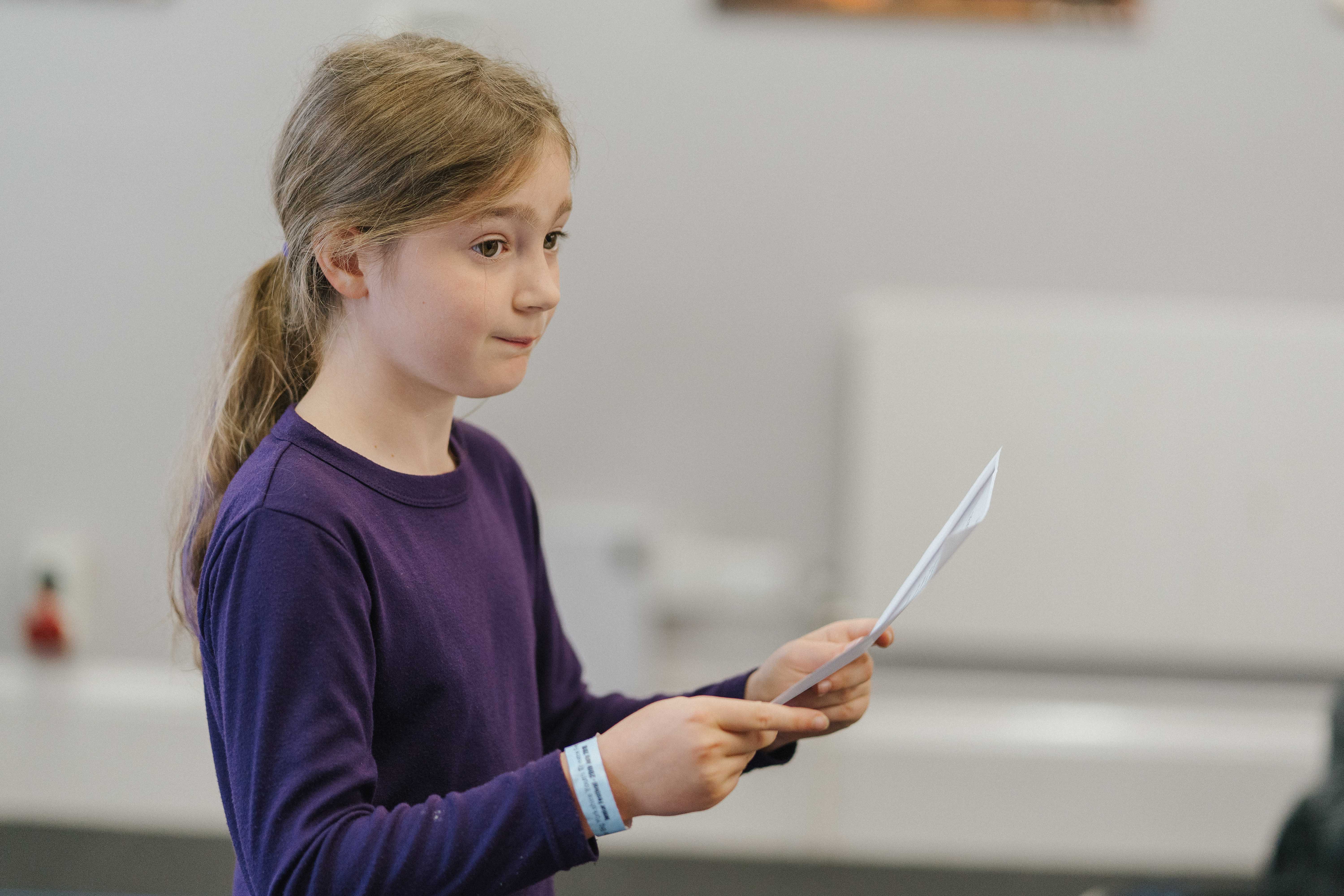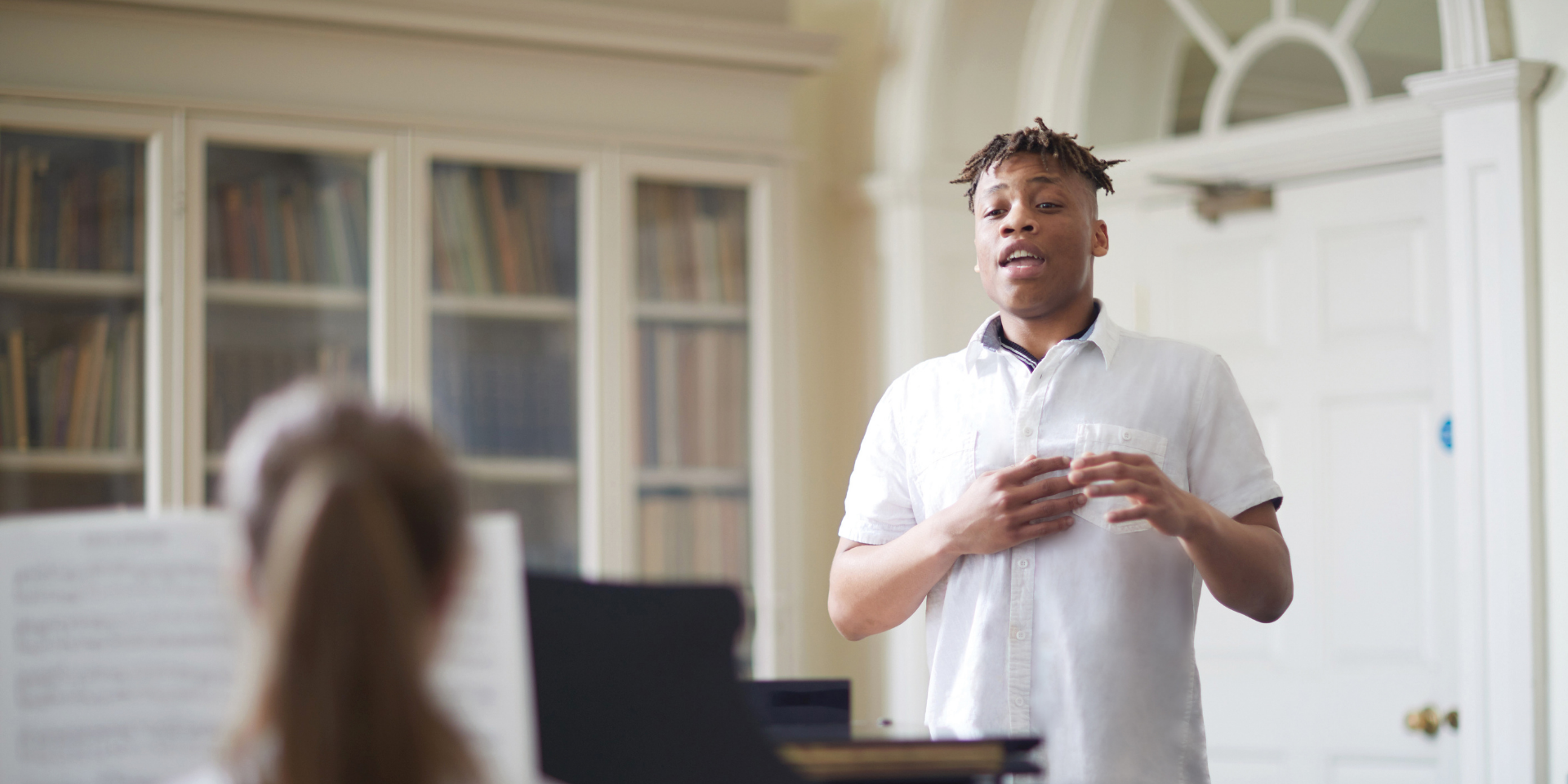
Selecting pieces for your Trinity College London Singing exam
BY: Natalie Christopher
09 May 2025
At Trinity College London, we take pride in offering candidates a wide range of options when they come to selecting pieces for their graded Singing exam. But before you get too carried away with trying to choose between your favourites, it’s important to know what requirements you need to meet for the exam you are working towards. In this blog, we’ll cover the requirements for each grade, whether face-to-face or digital, so you exactly what it is you’ll need to perform.
Before we look at the specifics for each grade, there is some important information that we need to cover...
Exam level and format
The level and format of exam you are taking will dictate how many pieces need to be performed. The structure for each type of exam is outlined below:
Face-to-face
Initial – Grade 5
- 3 pieces
- Technical work
- Supporting tests
Grades 6-8
- 4 pieces
- Technical work
- Supporting tests
Digital: Technical pathway
Initial – Grade 5
- 3 pieces
- Technical work
- Overall performance
Grades 6-8
- 4 pieces
- Technical work
- Overall performance
Digital: Repertoire-only pathway
Initial – Grade 5
- 4 pieces
Grades 6-8
- 5 pieces
Own composition
It is possible for a candidate to perform one of their own compositions in place of one of the listed pieces in the exam; however, the requirements detailed below still need to be adhered to. Please refer to page 17 of the Singing syllabus for further guidance.
Other things to note
No two songs by the same composer should be performed in the exam.
All songs may be sung in any voice type and in any key, published or transposed. This means that, if you would like to perform a song that wasn’t originally written for your particular voice type, it can be transposed into to a key suitable for you so that perform that in your exam. Naturally, your accompaniment – whether it be live piano or backing track - will also need to be in this same key.
And so on to selecting the repertoire! You can find a complete list of the repertoire for all grades on our website.
Initial Grade
Candidates choose three pieces from a single list of songs; four for Repertoire-only pathway.
Grades 1-3
Pieces are divided into three groups: Group A: Musical theatre & film, Group B: General song repertoire, and Group C: Folk song. Candidates choose three pieces; four for Repertoire-only pathway.
No more than two pieces from any one group should be performed.
Example song selection (Grade 2, Face-to-face or Technical pathway)
- Doh-Re-Mi from The Sound of Music by Rodgers – Group A
- Mr Nobody by Day – Group B
- Sospan Fach, Trad. arr. Mainwaring – Group C
Example song selection (Grade 3, Repertoire-only pathway)
- The Bare Necessities from The Jungle Book by Gilkyson – Group A
- Song of a Dream by Anand – Group B
- Katie’s Lullaby: Remember Your Dreams by Mandel – Group B
- Charlie is my Darling, Trad. arr. Harris – Group C
Grades 4-5
Pieces are still divided by three groups; however, Group A is subdivided as illustrated below:
- Group A(i): Opera, operetta & oratorio; Group A (ii): Musical theatre & film
- Group B: General song repertoire in English
- Group C: General song repertoire in other language
Candidates choose three pieces; four for Repertoire-only pathway.
No more than two pieces from any one group should be performed. Even with the subdivision of musical styles, Group A still constitutes one group so no more than two pieces can be selected from this section.
Example song selection (Grade 4, Face-to-face or Technical pathway)
- Electricity from Billy Elliot: The Musical by John – Group A
- Colours of the Wind from Pocohontas by Menken – Group A
- Caro mio ben by Giodani – Group C
Example song selection (Grade 5, Repertoire-only pathway)
- L’ho perduta (Barbarina’s aria) from Le nozze di Figaro by Mozart – Group A
- Too Beautiful for Words from The Color Purple by Russell, Willis & Bray – Group A
- All the Way Home by Quartel – Group B
- Der Blumenstrauss by Mendelssohn – Group C
Note: In both of these examples, both candidates perform two Group A pieces but no more.
Grades 6-8
Pieces are now divided into five groups:
- Group A(i): Opera, operetta & oratorio; Group A (ii): Musical theatre
- Group B: General song repertoire in English
- Group C: German Lied
- Group D: French mélodie
- Group E: General song repertoire in other languages
Candidates choose four pieces; five for Repertoire-only pathway.
At least one of these songs must be chosen from Group A.
However, the same rule applies as before that no more than two songs from any one group should be performed.
Programmes should include songs in at least two living languages (i.e. not Latin). This includes English.
Example song selection (Grade 7, Face-to-face or Technical pathway)
- Pie Jesu (Requiem) by Fauré – Group A
- The Heart of a Woman from Nightsongs by Adams – Group B
- A Lullaby for You by King – Group B
- Chanson triste by Saint-Saëns – Group D
Note: This candidate’s fourth piece needed to be in another language in order to comply with the syllabus requirement to perform in more than one living language.
Example song selection (Grade 8, Repertoire-only pathway)
- Marenka’s Aria from The Bartered Bride by Smetana – Group A
- Quia respexit (Magnificat in D, BWV 243) by J S Bach – Group A
- Flow, My Tears by Dowland – Group B
- This Little Rose by Jarman-Pinto – Group B
- Après un rêve by Fauré – Group D
Note: Despite needing to perform five pieces, this candidate adheres to the rule that no more than two songs from any one group should be performed. The Smetana piece is listed as being able to be performed in either English or Czech; however, with only one living language currently listed (English – the Magnificat is in Latin), the candidate would need to perform this song in Czech in order to meet the syllabus requirements.
We hope this information helps you make your song selections for your exam. If you do have any further queries, please do contact us at support@trinitycollege.co.uk.

.jpg)


Comments & Replies